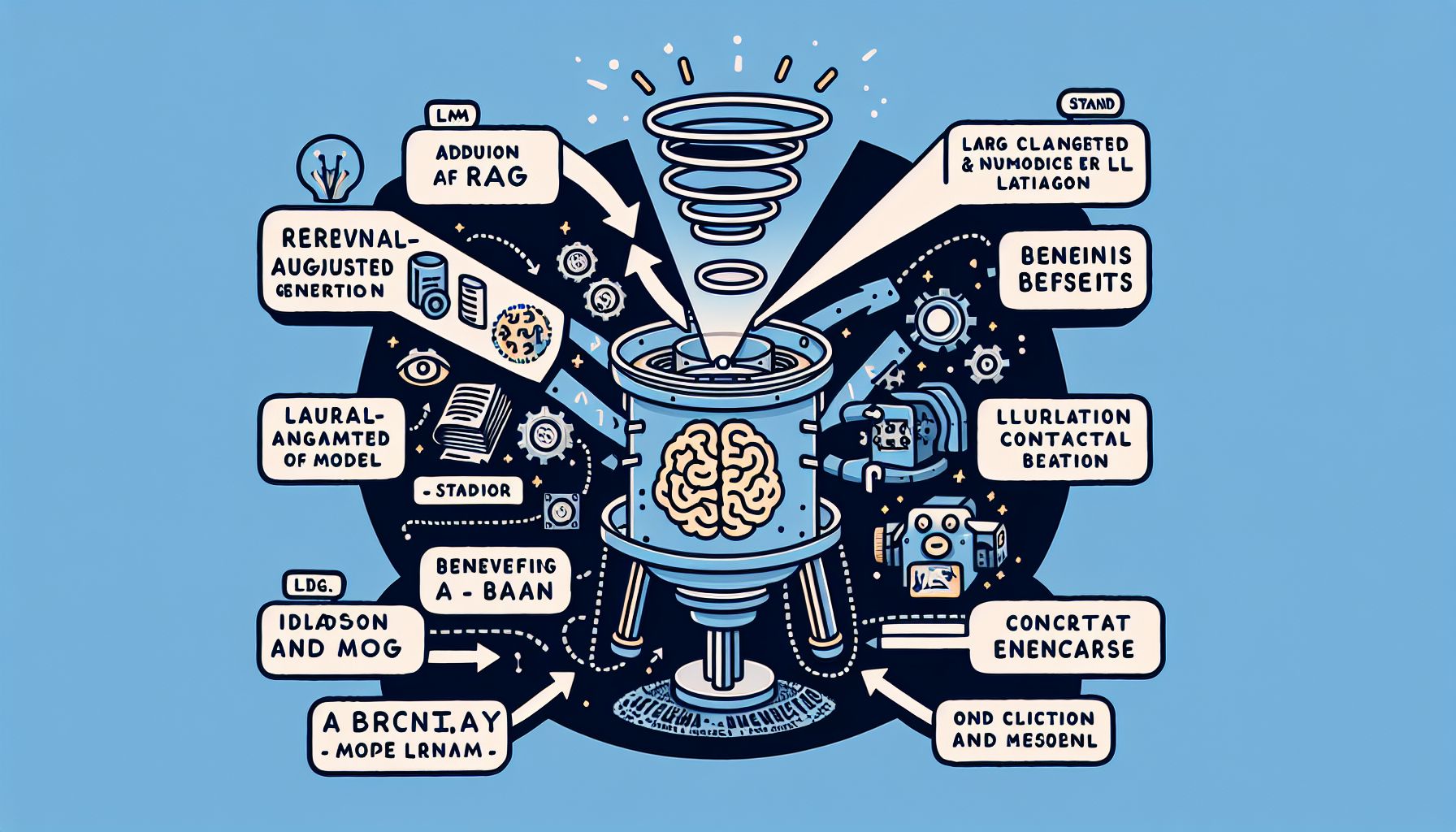📌 Let’s explore the topic in depth and see what insights we can uncover.
⚡ “Imagine a world where your language model not only responds accurately, but also incorporates a wealth of worldwide information into its answers. Welcome to the revolutionary world of Retrieval-Augmented Generation (RAG)!”
Do you remember those times when you would ask your language model a question, and it would give you a response that made you scratch your head in confusion? Well, those days are in the past, thanks to the development of Retrieval-Augmented Generation (RAG). This innovative technique is the superhero swooping in to rescue us from the villain of out-of-context responses 🦸. In this post, we’re going to take a deep dive into the fascinating world of RAG. We’ll explore how it’s making significant strides in improving the quality of responses from language models. But first, let’s set the stage with an understanding of what language models are and the challenges they face.
🏗️ Building Blocks: Understanding Language Models

"Boosting Language Model Responses with RAG Technology"
Language Models (LMs) are the backbone of numerous applications we use in our everyday lives, like Google’s autocomplete, Alexa’s responses, or Spotify’s song recommendations. In essence, a language model is a type of artificial intelligence that is trained to understand, generate, and complete human language. The ultimate goal? To interact with us in a way that feels as natural as talking to another human. However, generating such human-like responses can be a tricky feat. Traditional language models, such as GPT-3, generate text by predicting the next word in a sequence, given the previous words. Think of it as a sophisticated game of fill-in-the-blanks. But this process isn’t perfect. These models can sometimes generate responses that are off-topic or lack relevance to the original input. 🔍 Interestingly, where RAG enters the scene, ready to take on these challenges and elevate the game.
⚙️ The Magic Behind RAG: A Deeper Look
Retrieval-Augmented Generation (RAG) is a technique that fuses the best of both worlds from retrieval-based and generative language models. It’s like a superhero team-up where each member brings their unique power to the table, creating a force to be reckoned with. The “retrieval” part of RAG involves searching a knowledge source (like a database) to find relevant pieces of information that can be used to generate a response. This step is crucial as it provides the model with specific, context-relevant knowledge to base its response on. Think of it as a detective searching for clues to solve a case. Next, the “generation” part of RAG comes into play. The model uses the retrieved information to generate a response. 🔍 Interestingly, like a chef using ingredients from a recipe to create a delicious dish. Let’s put RAG into perspective with an example. If you ask a traditional language model a question like, “Who won the Oscar for Best Actor in 2020?”, it might struggle to give the right answer because this specific piece of information wasn’t available when it was last trained. But RAG, with its retrieval ability, can pull this information from its knowledge source and generate the correct response.
🚀 RAG in Action: Improving Language Model Responses
The beauty of RAG is that it’s not just theory – it’s being used in practical applications to improve language model responses. Here are some ways in which RAG is making a difference:
Enhancing Factuality
RAG’s ability to retrieve information from a knowledge source helps it provide more factual and accurate responses. 🔍 Interestingly, a significant leap forward, especially for tasks that require specific knowledge or up-to-date information.
Boosting Relevance
RAG ensures that the generated response is directly relevant to the input by grounding it in the retrieved information. It’s like having a compass that always points the response in the right direction.
Greater Consistency
By basing responses on retrieved information, RAG reduces the chance of generating inconsistent or contradictory statements. It’s like having a guide that keeps the conversation on track.
🛠️ How to Harness the Power of RAG
So, now that you’re excited about the potential of RAG, how can you start using it in your own projects? The good news is that Hugging Face, the AI community’s beloved platform, offers a RAG implementation that you can start using right away.
To use RAG in Hugging Face, you’ll need to import the RagTokenizer and RagModel classes. Here’s a simple example of how you can use RAG to generate a response to a question:
from transformers import RagTokenizer, RagModel
tokenizer = RagTokenizer.from_pretrained("facebook/rag-sequence-nq")
model = RagModel.from_pretrained("facebook/rag-sequence-nq")
input_dict = tokenizer.prepare_seq2seq_batch("Who won the Oscar for Best Actor in 2020?", return_tensors="pt")
generated_ids = model.generate(input_dict["input_ids"])
response = tokenizer.decode(generated_ids[0], skip_special_tokens=True)
print(response)
# Outputs: "Joaquin Phoenix"
This code snippet asks RAG the question, “Who won the Oscar for Best Actor in 2020?” and the model correctly outputs, “Joaquin Phoenix”. Thanks to RAG and Hugging Face, the future of AI conversations is here, and it’s more intelligent and relevant than ever.
🧭 Conclusion
The journey of language models has been full of exciting developments, with Retrieval-Augmented Generation (RAG) being one of the latest and most promising. By combining the strengths of retrieval-based and generative models, RAG is creating a new paradigm for AI conversations. It’s like a superhero that has swooped in to rescue us from the villain of irrelevant and out-of-context responses. Whether you’re an AI enthusiast, a researcher, or a developer, the implications of RAG are impossible to ignore. It’s enhancing the factuality, relevance, and consistency of language model responses, making our interactions with AI more natural and engaging. And with user-friendly implementations like the one from Hugging Face, the power of RAG is now at our fingertips. So, the next time you ask your language model a question and get a spot-on response, remember to thank the superhero of AI conversations – RAG.
🌐 Thanks for reading — more tech trends coming soon!
